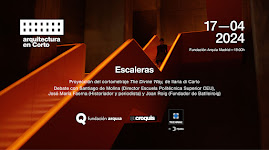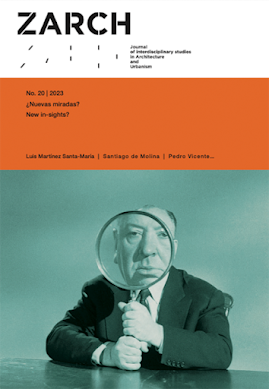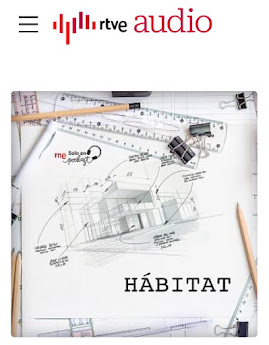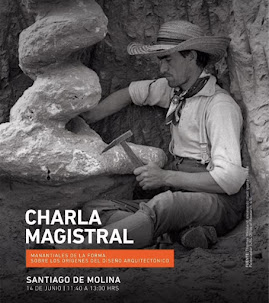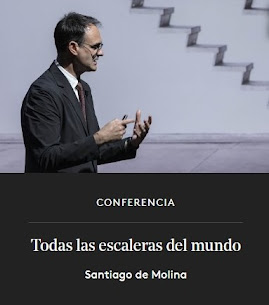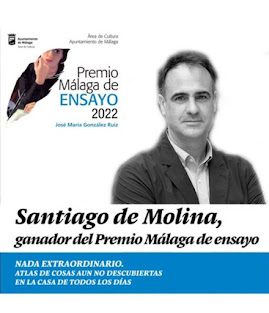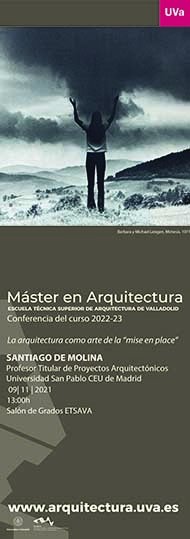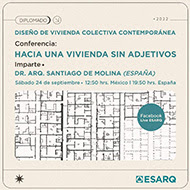El palacio de Carlos V, se construyó girado cerca de ocho grados respecto a los patios y ejes de la Alhambra. Un giro muy leve pero apreciable. Esa dislocación cose la grandeza de la pieza de Pedro Machuca con el ámbito urbano próximo y deja una provechosa y estudiada cuña entre ambos edificios. El espacio triangular que cose ambas geometrías es una de las maravillas de la Alhambra. No tanto por su contenido arquitectónico, sino por ofrecerse como el signo de un posible espacio de diálogo entre dos universos mentales y formales aparentemente irreconciliables.
El pórtico de entrada a la Capilla de la Resurrección del Cementerio de Estocolmo, diseñada por Lewerentz y construida entre 1922 y 1926, está separado y rotado apenas dos grados respecto al cuerpo de la nave. El giro acomoda el larguísimo camino de entrada entre árboles al espacio interior de la capilla. El pórtico columnado, que además del levísimo giro no toca la caja, resulta una anomalía difícil de percibir. No obstante para algún crítico ese leve gesto representa por sí mismo la subversión del canon clásico (1). Para algún otro estudioso imaginativo, es una clara alusión a la piedra que cerraba el sepulcro de Cristo y que los apóstoles encontraron desplazada (2). Sin ir tan lejos, ese giro es un signo de la independencia de ambos cuerpos y, con ello, de nuevo, dos mundos: el cargado del lenguaje clásico y el depuradamente sobrio y abstracto de la modernidad
Esos grados de más, mucho menos peligrosos que el exceso de grados Celsius, aportan otras lecturas al mundo.
(1) St. John Wilson, Colin. "Sigurd Lewerentz and the Dilemma of the Classical." Perspecta nº 24, 1988, p. 50
(2) Hart, Vaughan. “Sigurd Lewerentz and the ‘Half-Open Door.’” Architectural History, vol. 39, 1996, p. 181–96.
The Palace of Charles V was built rotated about eight degrees from the courtyards and axes of the Alhambra. A very slight but noticeable turn. This dislocation stitches the grandeur of Pedro Machuca's piece with the nearby urban environment, leaving a useful and studied wedge between the two buildings. The triangular space that sews both geometries together is one of the wonders of the Alhambra. Not so much for its architectural content, but for offering itself as a sign of a possible dialogue between two seemingly irreconcilable mental and formal universes.
The portico of the Chapel of the Resurrection at the Stockholm Cemetery, designed by Lewerentz and built between 1922 and 1926, is separated and rotated barely two degrees from the nave. The turn accommodates the long entrance path through the trees to the interior space of the chapel. The columned portico, which besides the slight turn does not touch the box, results in an anomaly that is difficult to perceive. However, for some critics, this slight gesture represents the subversion of the classical canon (1). For another imaginative scholar, it is "an allusion to the stone that closed Christ's tomb and was found open by his disciples"(2). Without going so far, this turn represents the independence of both bodies and, with it, once again, two worlds: the loaded classical language and the refined, sober, and abstract modernity.
These extra degrees, much less dangerous than the excess degrees Celsius, offer other readings to the world.

,%20p.%20457.jpg)








_-_left_hand_screen,%20imagen%20wikipedia.jpg)








